The rise of mobile technology has changed the way we interact with financial services, leading to the rise of digital banking and the need for mobile banking applications.
In this article, we provide a comprehensive guide on how to start a banking app, considering SDK.finance software as a ready backend solution for banking and finance app development.
Table of contents
Understanding the basics of building a banking app
For companies developing apps for banks, it is critical to understand how to make a banking app efficiently, as the FinTech industry demands a high level of security, reliability, and compliance with regulatory standards.
Identifying key features and functionalities
Before you begin banking app development, it is important to determine the mobile banking app features and functions you want the mobile banking apps to offer. Below are some key features you should consider, before developing online banking application:
- Account access and management
Allow users to create accounts, view balances, and access transaction histories.
- Fund transfers
Allow users to transfer money between their accounts, send money to other users, and make external transfers.
- Bill payments
Enable users to pay bills directly through the app, schedule recurring payments, and view payment history.
- Transaction notifications
Send real-time notifications for account activities, such as deposits, withdrawals, and purchases.
- Budgeting and expense tracking
Offer budgeting tools and expense categorization to help users manage their finances more effectively.
- Security features
Implement strong security measures, such as two-factor authentication (2FA), biometric authentication (fingerprint or facial recognition), and app lock.
- Customer support
Offer in-app customer support with live chat, help center access, or the ability to contact customer service representatives.
- Financial insights
Offer personalized financial insights and tips to help users make informed decisions, using your banking services.
- P2P Payments
Facilitate peer-to-peer payments between users within the mobile banking apps.
- Integrations
Integrate other financial services, payment gateways, or third-party applications to extend functionality.
Features and functionality should be tailored to the target audience and comply with relevant financial regulations to ensure a secure and seamless banking experience for users.
Regulations
The development of banking and FinTech apps is subject to numerous regulations to ensure the safety, security, and fair treatment of consumers and to maintain the stability and integrity of the financial system. If you’re wondering how to start a banking app, consider that regulations for banking and financial technology applications vary significantly depending on the country of operation. Each country has its own set of laws, regulations, and guidelines governing the financial industry to create a digital-only banking application.
Banking and FinTech banking mobile app development are subject to a few regulations found below.
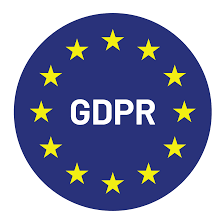 GDPR
GDPR
The General Data Protection Regulation was introduced by the European Union in 2016. It applies to all companies that provide services to EU citizens. Even if you are an American company providing services in Europe, the regulations apply to you.
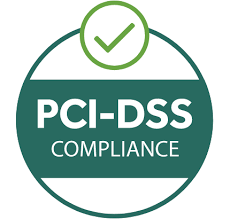 PCI DSS
PCI DSS
The Payment Card Industry Data Security Standard (PCI DSS) is a set of security standards established to protect credit card data and ensure cardholder privacy during all transaction processes. It applies to all organizations, stores or businesses that handle, process, store or transmit credit card data, regardless of their size or the number of transactions they perform.
 SEPA
SEPA
The Single Euro Payments Area (SEPA) is a payments integration initiative that enables seamless transactions in euros between European Union (EU) countries and some other European countries. SEPA enables the standardization and simplification of euro payments so that cross-border transactions within the SEPA area are comparable to domestic payments.
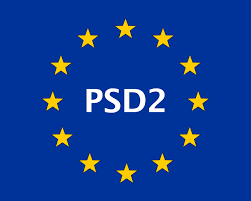 PSD2
PSD2
Payment Services Directive Two pieces of legislation apply to all payments made in the European Economic Area and are designed to force payment service providers to improve customer authentication procedures.
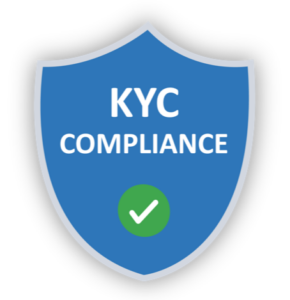
KYC
Know Your Customer is the process of verifying the identity of customers, that is necessary if you want create a digital-only banking application. The main objective of the guidelines is to prevent criminal elements from using banks for money laundering activities.
Choosing the right technology stack
The technology stack encompasses various tools, programming languages, frameworks, and libraries used for banking mobile app development. Explore step-by-step how to build a mobile banking app that provides users with secure access to their accounts and a wide range of banking services.
Developing the backend infrastructure
In the world of mobile banking software development, the backend is the backbone of any banking application, handling data storage, processing, and business logic. Choosing the right technology stack is a critical decision that directly impacts the scalability, security, and performance of the mobile banking application.
Benefits of using a ready backend solution to create a digital-only banking application
While building a backend from scratch can be time-consuming and resource-intensive, opting for a ready backend solution offers numerous advantages for developing future-ready banking apps.
First, it speeds up the mobile banking app development process and significantly reduces time to market. If you are confused about how to create a mobile banking app, the best option is to choose the FinTech software provider to save time and resources.
Secondly, ready solutions often come with pre-built features and functionality, so banking app developers do not have to reinvent the wheel and can focus on customizing the solution to meet specific requirements.
Financial companies that are looking at how to create a banking app, must consider that a pre-developed software provides higher data protection options, using a security by design principles. Therefore, a proven back-end solution can offer enhanced security, reliability, and scalability because it has undergone extensive testing and improvements over time.
Overview of SDK.finance software as a backend solution
SDK.finance is a flexible FinTech software that serves as a powerful backend solution for banking app development. It offers a wide range of functionalities and tools designed to streamline the creation of modern, secure, and feature-rich financial technology applications.
Key features and capabilities of SDK.finance
SDK.finance offers a wide range of key features and capabilities that make it a robust backend solution for banking app development. Below we present the main features:
- Customer onboarding
The banking platform supports remote account setup and enables integration with Know Your Customer (KYC) tools, simplifying the onboarding process for customers.
- Multi-currency accounts
The platform supports accounts in multiple currencies, allowing users to hold and manage funds in different currencies within a single account.
- Spending visualization
The SDK.finance system provides tools to categorize users’ expenses and display them in visually appealing charts. Users can also view transaction locations on a map.
- P2P money transfers
The mobile banking solution enables fast and secure peer-to-peer money transfers, allowing users to effortlessly send money to friends and family.
- Scalability and adaptability
The FinTech system is designed to scale and accommodate the growth and increasing transaction volumes of banking apps. It is also highly customizable, allowing developers to tailor the solution to their specific needs.
- Role and permissions management
The software makes it easy to manage team access to the backend by adjusting the permissions of preconfigured roles or creating new ones, increasing security and control, that is essential for mobile banking app development.
How SDK.finance simplifies the banking app development process?
SDK.finance simplifies backend development by providing a ready-made infrastructure that covers essential finance functions. Developers can leverage the flexible APIs and customizable features to tailor the backend to specific business needs.
This significantly reduces development time and effort, allowing the team to focus on developing unique front-end experiences and other value-added features. The scalability and reliability of the solution ensures smooth performance even with high transaction volumes, providing businesses and their customers with a reliable and best-in-class financial technology solution.
How do I design a banking application?
A user-friendly bank UI must be intuitive, easy to navigate, and visually appealing. They prioritize ease of use and make it easy for customers to access their accounts, manage their finances, and conduct transactions. Here are some examples of banks with user-friendly UIs:
Revolut UI/UX design
Revolut UI banking apps have modern and visually appealing designs. It features a customizable dashboard that allows users to rearrange sections based on their preferences. The app offers instant spending notifications, budgeting tools, and real-time exchange rates for currency conversion.
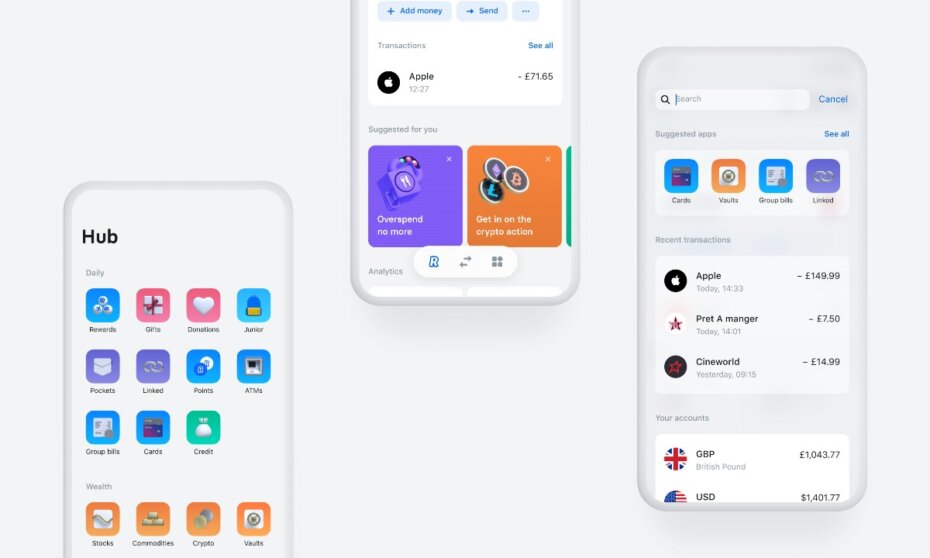
Source: Revolut
Monzo UI/UX design
Monzo’s UI emphasizes transparency and ease of use in mobile banking app development. It categorizes transactions with colored icons, and the overview page shows spending trends at a glance. The search function and transaction descriptions make it easy for users to find specific transactions , using the banking apps.
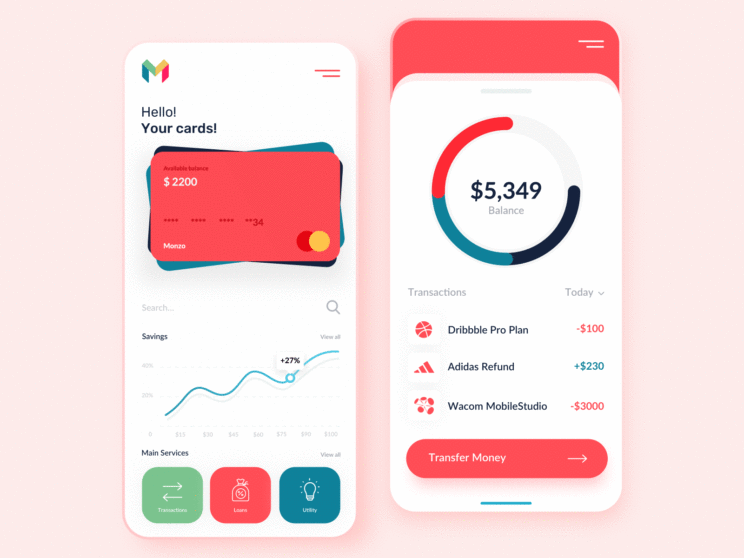
Source: Monzo
N26’s UI/UX design
N26’s UI is sleek and user-friendly in mobile banking development. It provides quick access to account balances, recent transactions and spending analysis. The “Spaces” function allows users to easily set aside money for specific purposes.
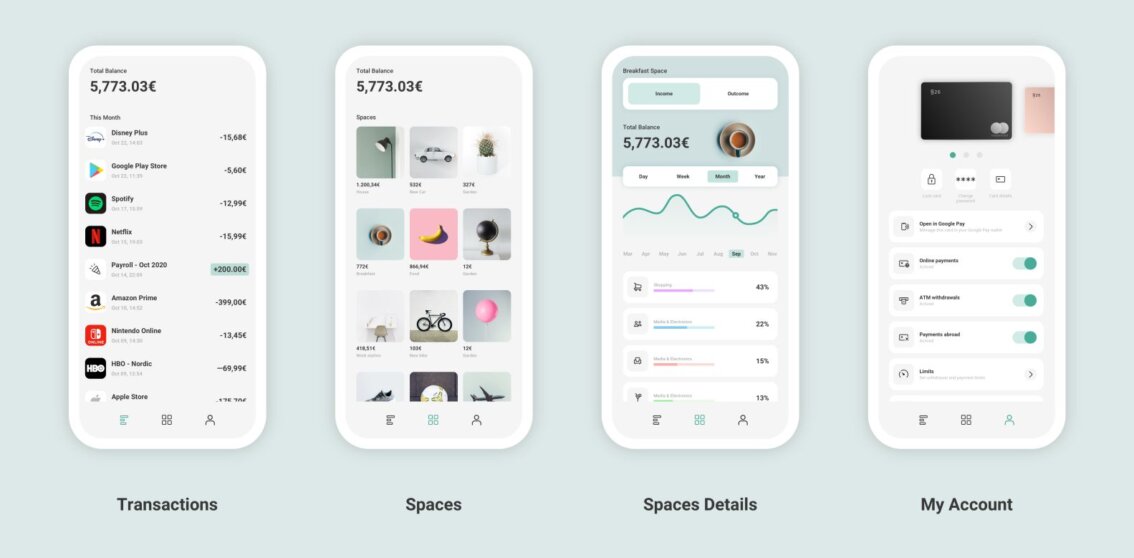
Integrations with third-party providers
Third-party integrations are essential to improve the functionality and convenience in mobile banking application development. Once the banking application is developed, third-party services must be integrated into the digital-only banking application.
Third-party solutions enrich your mobile banking application with external features without the need to build it from scratch. For example, you may need the following services:
- Payment gateways
- Local providers
- Push notification services
- Analytics and reports
For example, integrate with local service providers such as broadband providers, energy suppliers, telecom companies, and other popular services to enable bill payments directly from the banking app. This gives users a centralized platform to manage and pay their bills.
Integration with third-party services can be complex, as it requires working with external APIs and ensuring the app is properly configured to communicate with these services. However, experienced developers evaluate the available options and select the banking services that best meet the needs of the mobile banking application and its users. In addition, ensuring the security of the app and the confidentiality of data when communicating with third-party providers is crucial.
Deploying and launching the mobile banking application
The deployment and implementation of a banking application is a critical phase that requires careful planning and attention to detail, if you are going to create a digital-only banking application, This process includes the following steps: final testing and quality assurance, infrastructure setup and hosting, regular updates and enhancements of banking apps. By carefully following these steps, financial institutions can deliver a secure, user-friendly, and feature-rich banking application that fosters user trust and loyalty.
How much does it cost to develop a banking app?
The cost of developing a banking app can vary significantly, depending on a number of factors. These include the complexity of the app, the features and functionality it offers, the platform it is being developed for (iOS, Android, or web), the location and experience of the development team, and the time required for development.
In general, developing the full-featured banking apps from scratch can be a significant investment. The cost can range from tens of thousands to hundreds of thousands of dollars, and even higher for highly complex and customized solutions.
How long does it take to build a banking app?
The time required to build the banking apps can vary based on multiple factors, including the complexity of the app, the number of features, the development team’s expertise, and the development approach.
Conclusion
The potential of digital-only banking applications is boundless, offering a transformative and efficient way for users to manage their finances. By using the capabilities of SDK.finance white-label banking software as a ready backend solution, you can significantly speed up the banking apps development process and enhance the app’s functionality.


